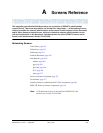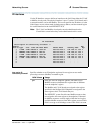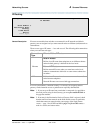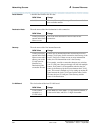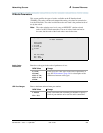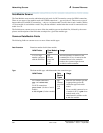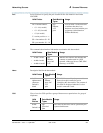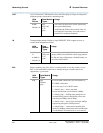
Networking Screens
251
Administration for Network Connectivity
555-233-504 — Issue 1 — April 2000 CID: 77730
A Screens Reference
IP Routing
General Description IP routes are needed when switches are connected in an IP network and default
gateways are not assigned and you want network nodes on different (sub)networks to
communicate.
There are two type of IP routes — host and network. The following table summarizes
when you would use each type:
In a LAN environment, if network security is a concern, not assigning default
gateways limits internode access to paths that are explicitly administered.
Note: 1. If you set up an IP route from a node that is connected via a ppp link to
the node you are using for the Gateway, you must first enable the link on
the ppp data module.
Note: 2. If an entry in the Destination Node or Gateway field is rejected, check
that the name has been entered on the Node Names screen. In particular,
check that names are entered on the correct page of the Node Names
screen — page 1 for AUDIX and MSA, pages 2–6 for a CMS server, a
node in a switch, and router nodes.
add ip-route 3 Page 1 of 1
IP ROUTING
Route Number: 3
Destination Node:
Gateway:
C-LAN Board:
Metric:
Route Type:
Connection
Type
When to Define IP Routes:
Ethernet
Host IP Routes
Define a host IP route when endpoints are on different subnets
and no default gateway is defined for the local node.
Network IP Routes
Define network IP routes when you want hosts on the local
subnet to communicate with hosts on some remote subnets but
not others.
PPP Define a host IP route when there are one or more intermediate
nodes between endpoints.
Network IP routes are not used with ppp connections.



